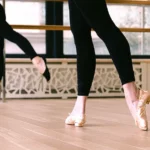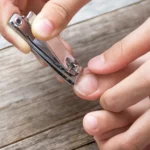Dress shoes and sneakers are good footwear options, no doubt. But no matter the level of breathability that these footwear afford, nothing can be compared to feeling the air on your feet directly. Which is what sandals and flip flops do for you?
But, what is the difference between these two similar footwear options? The main difference is that flip flops do not support your ankles at all, whilst sandals do. Flip flops are freer. Unlike sandals, they don’t have side buckets or back straps.
What are Flip Flops?
Flip flops are a type of footwear with a distinctive Y-shaped strap that runs from the front of the flip flops to the sides of your feet. This strap is split in two to form the Y shape. It usually originates from the space on the sole between the first and second toe.
Flip flops are usually made with rubber and can have different densities in the material. They can also be made with wool, plastic, and foam. They are also usually very lightweight and affordable.
Flip flops are also known for not offering any ankle support at all. This is the reason they are called flip flops because your ankles ‘flip and flop’ as you move in them. Despite this, they are quite comfortable footwear, and they are the perfect footwear for indoor use.
As far as sizing goes, for flip flops to fit you, the straps have to hold down your feet firmly without being tight. Too tight, and your instep will feel like it’s bound. A pair of flip flops that are too tight can restrict blood flow in your feet.
If the flip flops are too loose, you’d have to use your first two toes to grip the thin strap that goes into the soles of the flip flops. This is usually very uncomfortable and can cause you to fall.
What are Sandals?
Sandals are a type of footwear that has straps crossing over your instep into the soles on both sides. The straps are also connected such that there is a strap at your heel that also helps secure your ankles.
Sandals are probably the oldest type of footwear, and they typically have sturdy constructions. In any case, sturdy construction does not translate to unappealing looks. Modern sandals are typically stylish and can be worn both indoors and outdoors.
The soles of sandals can be made with many materials. Examples are rubber, leather, wood, foam, etc. The straps are usually made with rubber or leather. Sandals usually have metal buckles or Velcro straps.
As far as sizing goes, if your ankles are firmly secured, then the sandals are your size. Sandals that are too small would have your toes poking out in front and your heels extending out at the back.
On the other hand, sandals that are too big would be extremely loose and not give you any sense of stability and balance.
The Differences between Sandals and Flip Flops
Sandals and flip flops are both open footwear, and they are both usually comfortable and easy to wear. Whilst flip flops are technically a type of sandals, there are some differences between both of them. We will be explaining these differences under the headings below;
- Construction factor
- Places and occasions to wear them to
- Style
1. Construction Factor
Flip flops are easy to carry around, as a result of the fact that they are lightweight. This is due to the type of materials used to make them. Examples are rubber and foam.
These materials are also used in quite small densities across the soles of the flip flops, which is why they usually have thin soles. This makes them very comfortable to wear, but it doesn’t provide a lot of stability for your feet.
Flip flops are also less likely to have platforms. They are also usually fitted to be suitable for short term wear.
On the other hand, sandals are generally much more durable than flip flops. This is because they are usually made with materials that have a higher density. Examples of these materials are rubber and leather.
Sandals are also more likely to have platforms that provide better stability for your feet, and they are usually better fitted for long term wearing.
2. Places and Occasions To Wear them
Sandals can be worn to almost anywhere dress shoes can be worn. They are usually classy and professional-looking, and so they can be worn to banks, to the city, to weddings, to a funeral, basically almost any formal occasion. You will not look out of place.
Flip flops, on the other hand, are generally better for casual occasions, no matter how well designed they are. Though flip flops and sandals are generally classed as summer wear, flip flops are much more suitable for beach trips, park trips, etc.
Wearing flip flops to formal occasions may seem disrespectful just as going to the bank in flip flops isn’t proper.
3. Style
The construction style of both of these footwear is tied to their different functionalities.
For flip flops, they have a simple style that goes around the outline of the foot. This is completed with a Y-shaped strap that is attached to the often thin soles of the flip flops in three places; one at the front of the flip flop, two at the sides.
This leaves a lot of your feet open, and it’s best for air circulation. That’s probably why flip flops are best at beaches and swimming pools.
On the other hand, sandals are usually made with ankle support in mind. This simple adjustment is quite understated in the way it makes sandals look much more sophisticated than flip flops.
With the usual, but not always thin straps that run across your heels, sandals have a similar functionality range to dress shoes; usually anything formal.
In Conclusion & Final Words
Flip flops and sandals are terrific footwear options, especially if you live in a region with a warm climate. Enjoy their differences and functionalities, as it’s your preference that matters. Whatever works for you is just perfect.




